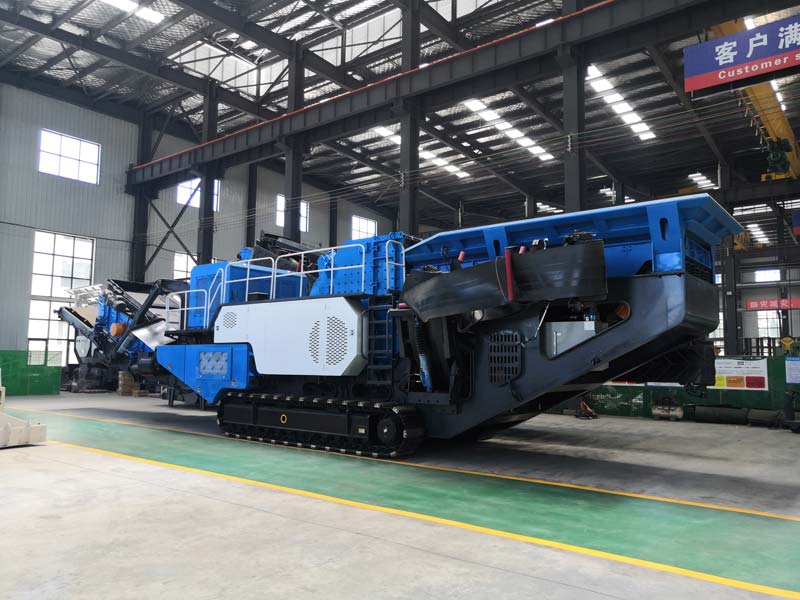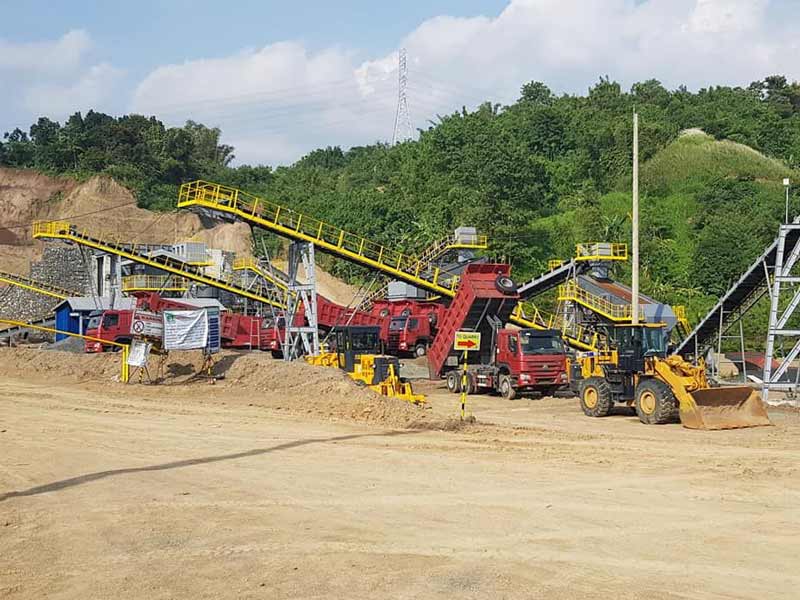Tracked Mobile Aggregate Crusher Plant with Oil Electric Dual-use
[edit] Tracked mobile aggregate crusher plants
Tracked mobile aggregate crusher plants have revolutionised the construction and mining industries with their versatility and efficiency. Equipped with oil-electric dual-use systems, these portable stone crushers offer unparalleled flexibility and cost savings. In this article, we’ll explore the features, advantages, and applications of these innovative machines.
[edit] What is a Tracked Mobile Aggregate Crusher Plant?
A tracked mobile aggregate crusher plant is a portable crushing unit mounted on a crawler chassis. Designed for mobility and adaptability, it is equipped to handle a wide range of crushing tasks. The oil-electric dual-use system allows the machine to operate efficiently in areas with or without a stable power supply.
[edit] Key Features of Tracked Mobile Crusher Plants
- Mobility: Easily transported and set up at various job sites.
- Dual-Power System: Switches between diesel and electric power for flexible operations.
- Compact Design: Optimised for space-saving without compromising performance.
- High Efficiency: Advanced crushing mechanisms for superior productivity.
[edit] Advantages of Oil-Electric Dual-Use Systems
The oil-electric dual-use feature is a standout innovation in portable stone crushers. It offers several benefits for construction and mining operations.
- Enhanced Flexibility
The dual-power system allows the aggregate crusher plant to operate in remote areas without a stable power supply. When connected to electricity, it reduces fuel consumption, making it environmentally friendly.
Using electric power significantly lowers operational costs compared to diesel. The dual system ensures uninterrupted work, even during power outages.
- Reduced Environmental Impact
Electric operation produces fewer emissions, aligning with sustainable construction practices. This feature is particularly beneficial for urban projects with strict environmental regulations.
- Reliable Performance
The oil-electric system provides consistent power, ensuring smooth operation in challenging conditions.
[edit] Components of a Tracked Mobile Aggregate Crusher Plant
A tracked mobile aggregate crusher plant is composed of several essential components that work together seamlessly.
- Crusher Unit
The crusher is the core of the plant, responsible for breaking down raw materials into desired sizes. Common types include jaw crushers, cone crushers, and impact crushers.
- Crawler Chassis
The crawler chassis enables mobility, allowing the plant to navigate rough terrains and reach remote job sites.
The oil-electric dual-use system ensures continuous operation, whether powered by diesel or electricity.
- Screening Unit
Integrated screens separate materials by size, ensuring uniform aggregates for specific applications.
Advanced control panels provide user-friendly interfaces for monitoring and managing operations.
[edit] Applications of Tracked Mobile Crusher Plants
Tracked mobile aggregate crusher plants are suitable for a wide range of applications in construction and mining.
These plants are ideal for producing aggregates used in road bases and sub-bases, ensuring durability and stability.
Portable stone crushers efficiently process demolition debris, turning waste into reusable materials.
- Mining Operations
The robust design allows the plant to handle hard rocks and ores, making it a reliable choice for mining projects.
Compact and environmentally friendly, tracked mobile crushers are perfect for urban projects with space and emission constraints.
[edit] Why Choose a Tracked Mobile Aggregate Crusher Plant?
Investing in a tracked mobile aggregate crusher plant with an oil-electric dual-use system offers numerous advantages for businesses.
- High Productivity
These plants deliver consistent performance, even in demanding conditions, ensuring timely project completion.
- Versatility
Their ability to handle various materials and adapt to different job sites makes them a versatile solution for diverse projects.
Reduced fuel consumption and maintenance costs contribute to overall savings, improving profitability.
With lower emissions and efficient resource utilisation, these plants support eco-friendly construction practices.
[edit] Maintenance Tips for Tracked Mobile Crusher Plants
To maximise the lifespan and efficiency of your tracked mobile aggregate crusher plant, regular maintenance is essential.
- Inspect Components Regularly
Check the crusher, power system, and crawler chassis for wear and tear. Replace damaged parts promptly to avoid further issues.
- Maintain Proper Lubrication
Ensure all moving parts are well-lubricated to reduce friction and prevent overheating.
- Clean the Plant
Remove debris and build-up from the crusher and screening units to maintain optimal performance.
Regularly test both diesel and electric systems to ensure seamless switching and reliable operation.
[edit] Conclusion
Tracked mobile aggregate crusher plants with oil-electric dual-use systems represent the future of efficient and sustainable crushing operations. These portable stone crushers combine flexibility, cost savings, and environmental benefits, making them an invaluable asset for construction and mining projects. Investing in such a plant not only boosts productivity but also aligns with modern sustainability goals.
[edit] Related articles on Designing Buildings
- Avoiding crane collapses.
- Back actor.
- Banksman.
- Bituminous mixing and laying plant.
- Central plant.
- Compact construction equipment.
- Compressed air plant.
- Concreting plant.
- Construction plant.
- Construction tools.
- Crane supports.
- Crane regulations.
- Decentralised plant.
- Earth-moving plant.
- Equipment supply.
- Excavating plant.
- Forklift truck.
- Hoists.
- How to manage construction plant.
- Lifting devices.
- Mini excavators market.
- Piling equipment.
- Plant acquisition.
- Power float.
- Pumps and dewatering equipment.
- Rubble chute.
- Tool theft.
- Types of crane.
Featured articles and news
Latest Build UK Building Safety Regime explainer published
Key elements in one short, now updated document.
UKGBC launch the UK Climate Resilience Roadmap
First guidance of its kind on direct climate impacts for the built environment and how it can adapt.
CLC Health, Safety and Wellbeing Strategy 2025
Launched by the Minister for Industry to look at fatalities on site, improving mental health and other issues.
One of the most impressive Victorian architects. Book review.
Common Assessment Standard now with building safety
New CAS update now includes mandatory building safety questions.
RTPI leader to become new CIOB Chief Executive Officer
Dr Victoria Hills MRTPI, FICE to take over after Caroline Gumble’s departure.
Social and affordable housing, a long term plan for delivery
The “Delivering a Decade of Renewal for Social and Affordable Housing” strategy sets out future path.
A change to adoptive architecture
Effects of global weather warming on architectural detailing, material choice and human interaction.
The proposed publicly owned and backed subsidiary of Homes England, to facilitate new homes.
How big is the problem and what can we do to mitigate the effects?
Overheating guidance and tools for building designers
A number of cool guides to help with the heat.
The UK's Modern Industrial Strategy: A 10 year plan
Previous consultation criticism, current key elements and general support with some persisting reservations.
Building Safety Regulator reforms
New roles, new staff and a new fast track service pave the way for a single construction regulator.
Architectural Technologist CPDs and Communications
CIAT CPD… and how you can do it!
Cooling centres and cool spaces
Managing extreme heat in cities by directing the public to places for heat stress relief and water sources.
Winter gardens: A brief history and warm variations
Extending the season with glass in different forms and terms.
Restoring Great Yarmouth's Winter Gardens
Transforming one of the least sustainable constructions imaginable.

























